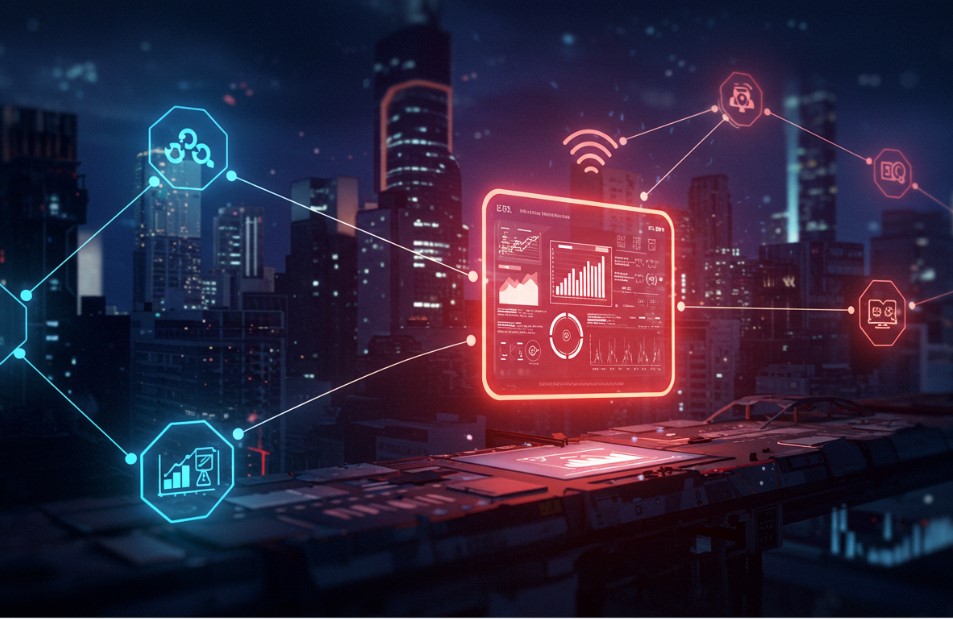
Telemetryczny
In today’s fast-paced digital landscape, staying ahead of the curve means harnessing the power of data. Enter telemetryczny systems—your secret weapon for real-time data monitoring. Imagine having instant insights at your fingertips, enabling you to make informed decisions on the fly. Whether you’re in healthcare, automotive, or even environmental management, telemetry is revolutionizing how industries operate.
This in-depth guide will walk you through everything you need to know about telemetryczny systems: how they work, their components, benefits, and real-world applications. Ready to dive into a world where information flows effortlessly? Let’s get started.
What is Telemetryczny?
Telemetryczny is the Polish term for “telemetry-based” or “related to telemetry.” In English usage, it refers to systems or technologies that utilize telemetry to monitor, collect, and transmit data from remote or inaccessible locations to a central control system.
At its core, telemetry is the automated process of measuring and transmitting data from remote sources. It enables operators to observe the status of machinery, environments, or systems in real-time—without needing to be physically present.
How Telemetryczny Works
A typical telemetryczny system uses a combination of:
- Sensors to measure physical variables like temperature, pressure, or speed.
- Data transmission protocols (Wi-Fi, cellular, satellite).
- Data loggers to store information.
- Dashboards or analytics software for visualization and decision-making.
These systems are vital across various sectors—automotive diagnostics, weather forecasting, aerospace, smart agriculture, and healthcare monitoring—making telemetryczny a foundation of modern operational intelligence.
The Benefits of Real-Time Data Monitoring
Investing in a telemetryczny system provides substantial operational advantages. Here’s how real-time data monitoring transforms businesses:
1. Improved Decision-Making
Real-time visibility enables stakeholders to respond immediately to changes. Whether it’s adjusting a production line or rerouting logistics, decisions are data-driven and timely.
2. Early Fault Detection
Telemetry allows continuous equipment diagnostics. For instance, in industrial settings, vibration telemetry can detect bearing failure before costly downtime occurs.
3. Resource Optimization
Dynamic resource allocation based on live data increases efficiency. For example, energy consumption telemetry helps optimize HVAC systems in large buildings.
4. Enhanced Safety
In fields like mining or aviation, telemetry monitors environmental conditions or mechanical systems, helping prevent hazards and ensure personnel safety.
5. Customer Satisfaction
In sectors like e-commerce and logistics, telemetry supports real-time tracking, providing accurate delivery updates and improving customer trust.
Types of Telemetry Systems
Telemetryczny systems can be classified based on how data is transmitted, the scope of deployment, and specific use cases.
1. Remote Telemetry
Used in fields like oil and gas, remote telemetry collects data from geographically distant sensors. These systems reduce the need for field personnel while maintaining operational oversight.
2. Wired Telemetry
Wired systems use physical cables to transmit data. They’re common in medical applications (e.g., patient monitoring during surgery), where interference and reliability are critical concerns.
3. Wireless Telemetry
Wireless telemetry uses technologies like Bluetooth, Wi-Fi, or LTE to send data. It’s widely used in automotive diagnostics and industrial automation.
4. Satellite Telemetry
Crucial for remote monitoring where traditional connectivity fails, such as in marine research, wildlife tracking, and space exploration.
Each type is tailored to specific environmental, technical, and budgetary requirements. Selecting the right telemetryczny system ensures optimal performance and ROI.
Key Components of a Telemetryczny System
To fully understand telemetryczny systems, you need to know their building blocks:
1. Sensors
Sensors gather real-time measurements of physical phenomena. Examples include:
- Temperature sensors
- GPS trackers
- Pressure transducers
- ECG electrodes (in healthcare)
2. Data Acquisition Unit
These devices collect, preprocess, and format sensor data. They may also perform initial diagnostics before transmission.
3. Transmission Medium
The method used to send data from the sensor site to the central system. Options include:
- Cellular networks (4G/5G)
- Satellite links
- LoRaWAN (Low Power Wide Area Networks)
- Fiber optics (for wired setups)
4. Central Receiver / Gateway
This is the endpoint that receives data. It often includes error-checking protocols to ensure accuracy.
5. Data Storage and Processing
Servers and cloud platforms store and analyze incoming telemetry data. This is where big data analytics or AI algorithms may be applied.
6. User Interface (UI) / Dashboard
Interactive dashboards allow human operators to interpret real-time data through charts, alerts, and reports.
How to Set Up a Telemetry System
Implementing a telemetryczny system involves several strategic steps:
Step 1: Define Objectives
Start by identifying what metrics are most important. Is it temperature stability? Asset location? Fluid levels?
Step 2: Choose the Right Sensors
Select high-accuracy, durable sensors appropriate for your application. For instance, industrial-grade humidity sensors for manufacturing.
Step 3: Select Communication Protocol
Base this decision on your environment and range requirements. Use Wi-Fi for local coverage, cellular for mobile assets, or satellite for remote access.
Step 4: Set Up Data Management Tools
Install or configure software to collect, store, and analyze data. Cloud-based platforms are scalable and accessible.
Step 5: Ensure Cybersecurity
Encrypt data in transit and at rest. Use secure login, firewalls, and regular updates to protect your system from threats.
Step 6: Test the System
Run simulations and pilot tests to verify performance and calibration. Address anomalies before full-scale deployment.
Best Practices for Real-Time Monitoring
To make the most of telemetryczny systems, follow these industry best practices:
1. Regular Calibration
Maintain sensor accuracy with routine calibration, especially in high-stakes environments like laboratories or manufacturing lines.
2. Set Actionable Thresholds
Use dynamic thresholds for alerts. Too many false alarms reduce credibility and distract personnel.
3. Invest in Redundancy
Backup sensors and alternative communication channels ensure continuity during system failures or maintenance.
4. Use Visual Analytics
Modern dashboards with visual cues and historical trends allow quicker interpretation and faster response times.
5. Train Your Team
Ensure staff understands how to interpret telemetry data and respond appropriately.
Industry Applications of Telemetryczny Technology
Telemetryczny systems are used across countless industries, often in mission-critical roles:
Healthcare
- Remote patient monitoring
- ICU telemetry
- Wearables for chronic disease management
Automotive
- OBD (On-Board Diagnostics)
- Fleet management
- Predictive maintenance in EVs
Environmental Monitoring
- Air quality sensors in urban areas
- Forest fire risk detection
- Water level monitoring in flood-prone regions
Agriculture
- Soil moisture telemetry
- Livestock tracking
- Weather-based irrigation systems
Aerospace & Defense
- Spacecraft telemetry for mission control
- Aircraft system diagnostics
- Missile guidance systems
For more examples and implementation strategies, visit our Case Studies or read about IoT in Industry 4.0 on our blog.
Challenges and Security in Telemetry Systems
While powerful, telemetry systems are not without challenges:
1. Data Overload
As sensors multiply, so does data. Without proper analytics, teams can become overwhelmed.
2. Network Limitations
Latency and reliability issues, especially in wireless systems, can impact real-time accuracy.
3. Cybersecurity Risks
Telemetry data can be sensitive. Unauthorized access or manipulation can have serious implications, especially in critical sectors like healthcare or infrastructure.
4. Integration Complexity
Legacy systems may not be telemetry-ready. Integration often requires custom development or APIs.
To mitigate these risks, organizations should follow secure development lifecycle practices, choose end-to-end encryption, and regularly update systems.
Future Trends in Telemetry
Telemetryczny systems are evolving rapidly. Here’s what to expect:
1. AI and Machine Learning Integration
Advanced analytics can detect patterns and anomalies automatically, reducing manual oversight.
2. Edge Computing
Processing data at the source (rather than in the cloud) reduces latency and enhances response times.
3. 5G Adoption
With ultra-fast data transmission, 5G will allow richer telemetry, including video streaming from remote devices.
4. Sustainability Tracking
Telemetry will play a key role in tracking carbon emissions, energy use, and environmental impacts in real time.
5. Expansion of IoT
As more devices become connected, telemetry will serve as the backbone for everything from smart homes to autonomous vehicles.
Conclusion
In an increasingly connected and data-driven world, telemetryczny systems are no longer optional—they’re essential. Their ability to deliver accurate, real-time data transforms how organizations operate, make decisions, and innovate.
Whether you’re managing a fleet of delivery trucks, overseeing a hospital ward, or protecting endangered wildlife, telemetry enables smarter, faster, and safer outcomes.
By understanding telemetry’s components, benefits, and implementation strategies, you position your organization to thrive in the age of real-time intelligence.
FAQs
What industries use telemetryczny systems the most?
Telemetry is widely used in healthcare, automotive, manufacturing, aerospace, agriculture, and environmental monitoring.
Is telemetry secure?
Yes—when implemented with encryption, authentication, and regular updates. Cybersecurity must be a top priority.
Can I implement telemetry on a small budget?
Yes. There are scalable solutions for startups or SMEs, especially with affordable sensors and cloud-based software.
How does telemetry differ from IoT?
Telemetry is a component of IoT. IoT involves connected devices, while telemetry focuses specifically on data transmission and monitoring.






